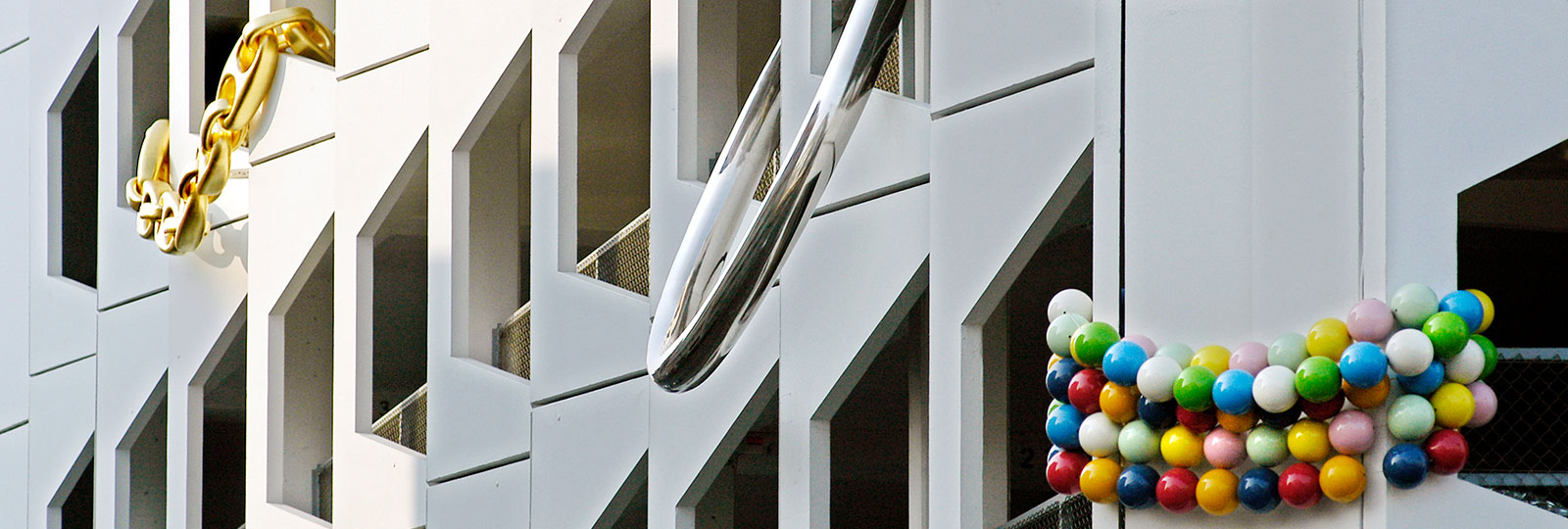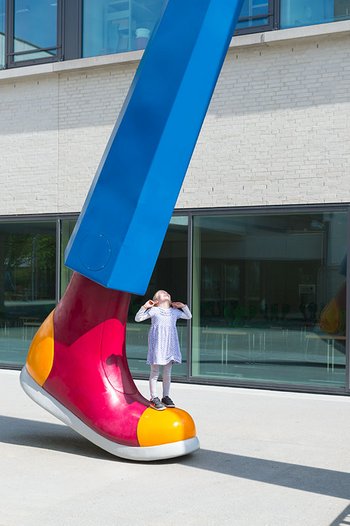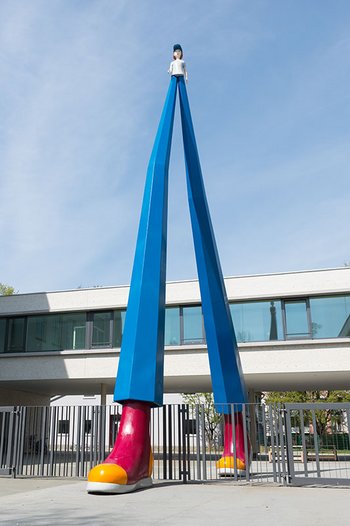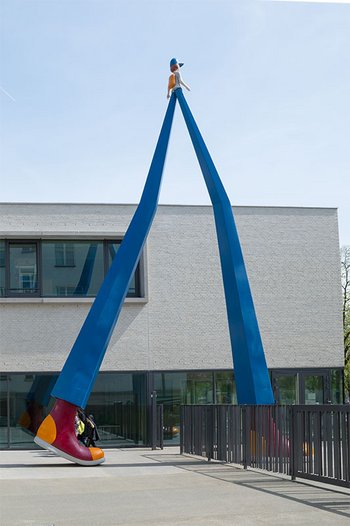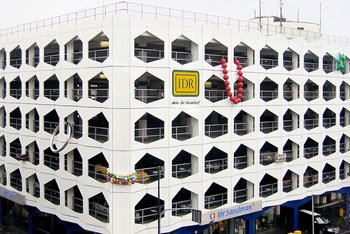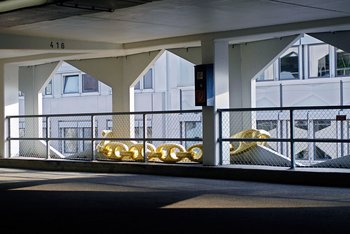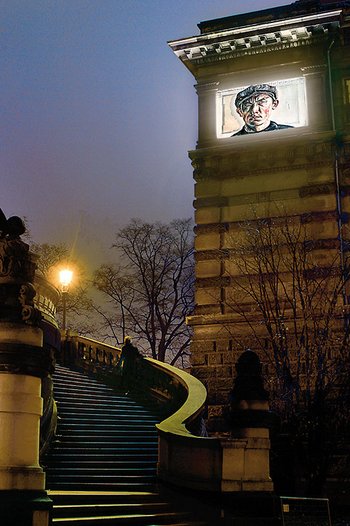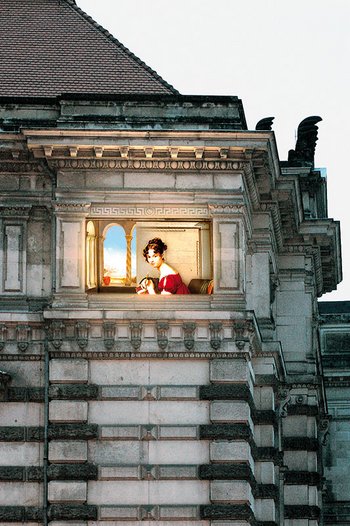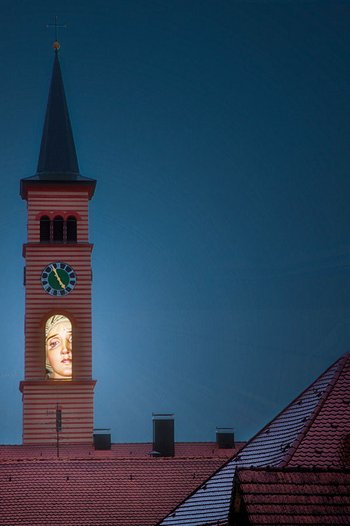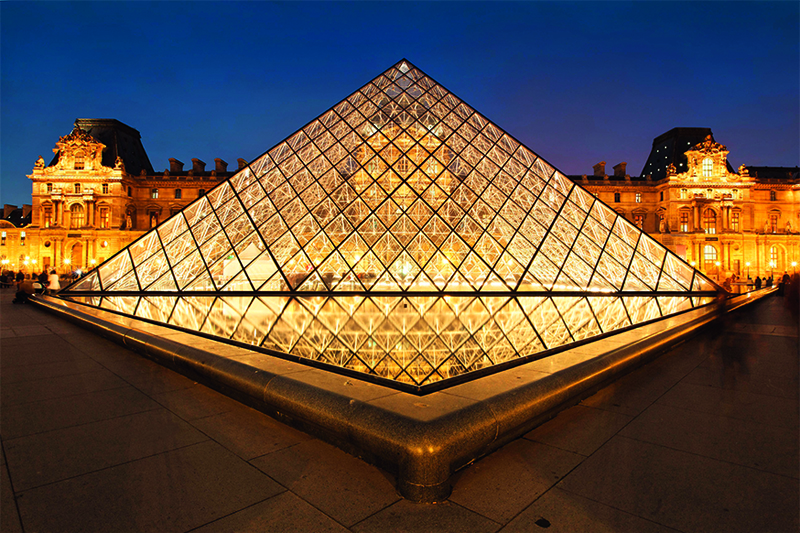More than decoration
This article appeared in Colore 18 "himbeerrot" (raspberry red).
Order the German printed version via email at: kontakt@brillux.de
Title image: "Schmuck", inges idee; Photographer: Peter Stumpf
Art and architecture – in an ideal world, they complement each other, enhance each other, and provide unusual perspectives on each other's discipline. But what is "Kunst am Bau" or "art in architecture", and how did the concept come about and why? Let's travel in time.
People have always had the desire to enhance their homes with decorative art. The beginnings of the interplay between art and architecture can even be witnessed in cave paintings, stretching across classical antiquity right up to magnificent works of art in castles and churches. To promote art as cultural heritage, "Percent for Art" first became a governmental task in the 1919 Constitution of the Weimar Republic. It recommended that artists should be involved in new state buildings.
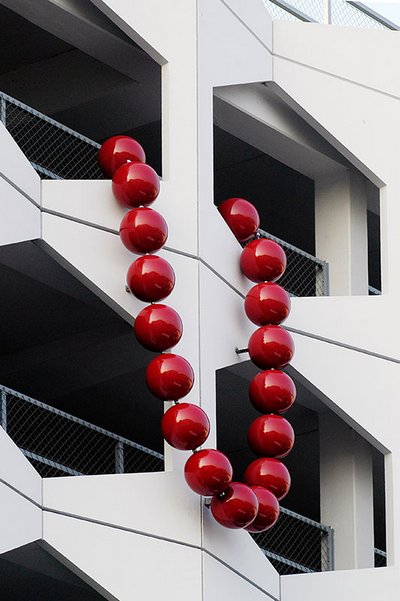
The fact that art in buildings should be more than just decoration goes without saying. Ideally, art and architecture go together hand-in-hand. State art in construction projects is awarded through tenders run by the federal government. Criteria for selection includes, among other things, the individuality of the artistic contribution, its quality, and relevance. A council of experts decides which projects to implement.
Today, for large construction projects, 0.5 percent of construction costs are used; for smaller projects, it is up to 1.5 percent. The German Federal Ministry for Environment, Nature Conservation and Nuclear Safety (BMUB) is responsible for this. The procedural rules are set out in the guidelines for the planning and execution of German federal construction projects (RBBAU) and continued with the "Kunst am Bau" (Percent for Art) guidelines from 2005, updated in 2012.
State municipal projects and construction projects are in addition to this. As art in architecture is a recommendation and not a regulation, this discipline is enforced in different ways in the various federal states.
Image: "Schmuck", inges idee; Photographer: Peter Stumpf
Under the National Socialists, art, not just on building sites, was instrumentalized in an increasingly ideological way. After the devastation of the Second World War, large parts of Germany lay in ruins. In these times of existential need, the decision issued by the first German Bundestag was even more important. "Kunst am Bau" was declared a governmental task.
Donating at least one per cent of construction costs for all federal buildings to art was recommended. After the destructive experience of the war, art in public spaces also served as an aesthetic aspect, representing beauty in the midst of chaos. Little wonder, then, that art in construction in the 1950s served mainly decorative purposes.
In contrast, the 1960s were marked by a new level of architectural understanding, which was expressed in contemporary construction. The theme of this architecture was functional and sober, whereas art was critical, more unique.
The interplay between art and architecture reached its peak at the start of the 1990s, with the German reunification. In the new capital city of Berlin, numerous new state buildings were needed; whereas existing buildings that had former ideological identities had to be reinterpreted – through art.
In the private sector, art in construction is also diversely represented today. Banks, insurance companies, and hospitals look at their real estate from an artistic perspective and use it to underline their corporate culture.
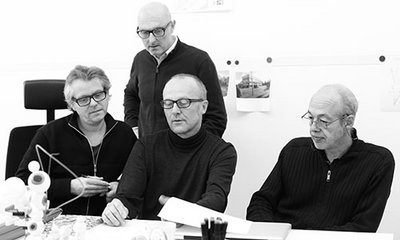
Kunst am Bau projects make us question how we see the world.
Hans Hemmert; Image: Artists' collective "inges idee" from Berlin: Axel Lieber, Hans Hemmert, Thomas A. Schmidt, Georg Zey (from left to right); Photographer: Stefan Pielow
inges idee: A contribution to the public debate
inges idee is an artist collective from Berlin that has been creating art in public spaces since 1992. Consisting of Hans Hemmert, Axel Lieber, Thomas A. Schmidt, and Georg Zey, who are all also active individually as artists, the group comes up with eye-catching, colorful and often cheeky counterpoints in public spaces. "Art in construction and art in public space surprises us in urban contexts and makes us question how we usually see the world," explains Hans Hemmert.
The project "Schmuck" in Düsseldorf is just one example of this: The hole in the parking garage at Karlsplatz, which had grown larger over the years, was decorated with ten over-sized pieces of jewelry that were threaded artfully into the facade, by the artist collective. "In this sense, art in construction is important, because it can inspire necessary public debates in our society," says Hemmert.
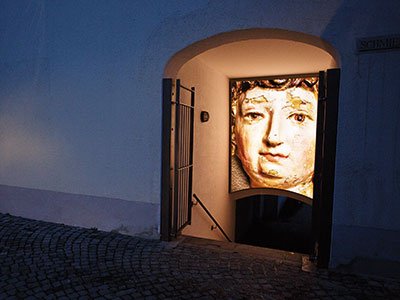
In an ideal world, art is part of the architecture itself.
Elisabeth Brockmann; GLÜCK, 12-part light installation in Friedberg/Augsburg (Detail), photographer: Alexander Vejnovic
Elisabeth Brockmann: Art in Architecture
"The Americans refer to Kunst am Bau more appropriately as 'Art in Architecture' says Düsseldorf artist, and student of Gerhard Richter, Elisabeth Brockmann. "That is actually more appropriate since in an ideal world, the art should be part of the architecture so that one inspires the other."
Brockmann applied this "involvement" quite literally in the famous Albertinum in Dresden. Six portraits from that collection of paintings were used as key motives and "recessed" into the building itself, visible from outside, illuminating the building without lighting it directly.
Brockmann says she always comes up against the argument that art in architecture is a waste of public money. "Even if there is some resistance to projects at the start, art for me always belongs to the time of the overall appearance of the architecture – if it is done well."
And if not? "The customer often specifies what they want to tackle thematically," explains the artist. "This means that in the end, art is something like a 'side salad'. If you need to undertake a job in art, it is often awkward; something that art in architecture must never be."
The palm trees are a reference, an illusion to the topic of camouflage in the secret service and the exoticism of other countries.
Ulrich Brüschke
Ulrich Brüschke: Tackling architecture
In 2012, Artist Ulrich Brüschke, based in Nuremberg, installed two artificial palm trees, both more than 20 meters high, at the headquarters of the federal news service in Berlin. They were called "0° Breite (Modified Cellular Towers)" and it is a reference to the mobile phone masts often disguised as palm trees in tropical countries.
In Berlin, these large sculptures were cause for debate and even prompted rumors that circulated for days, saying that the palms were equipped with listening technology. "The palm trees are a reference, an illusion to the topic of camouflage in the secret service and the exoticism of other countries," says Ulrich Brüschke.
Of course, there are no listening posts in the Berlin palm trees. "The news service's own transmitter and receiver systems are located on the roof," jokes Brüschke. "And you can see that for yourself." The artist has been working on art in architecture since 1999, and has found that the quality of the artistic work has greatly improved.
"There were decades when art was simply 'dumped' in the project and often had very little to do with the building. Today, that is no longer the case. Whether it's controversial or related to the building," resumes the artist, "both represent reactions that respond deliberately to the architecture."
